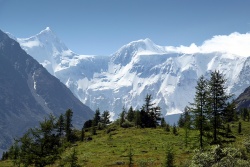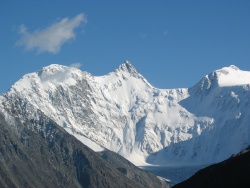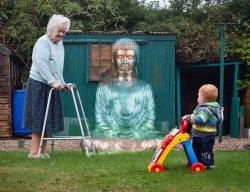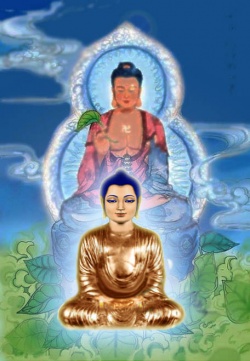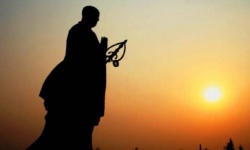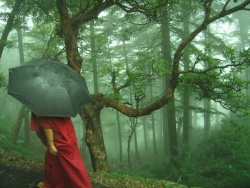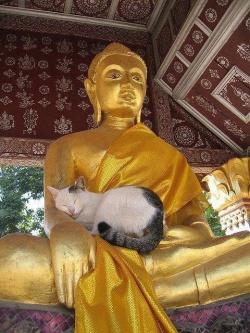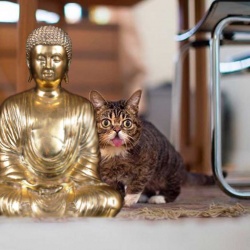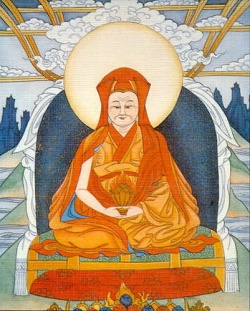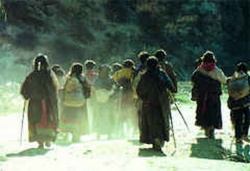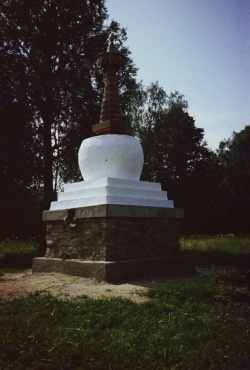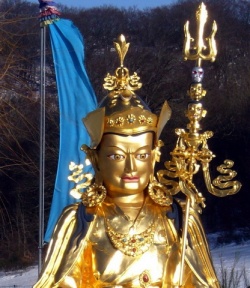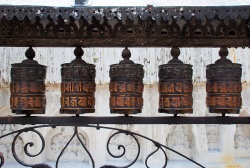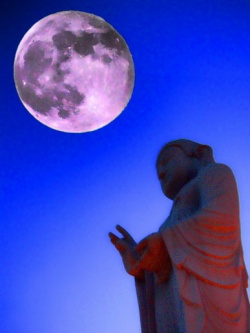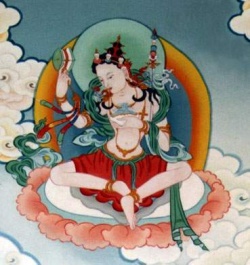Difference between revisions of "Sacred Sites and Objects of the Peoples of Altai Republic, Russia"
(Created page with " 1 Sacred Sites and Objects of the Peoplesof Altai Republic, Russia Chagat Almashev, Director, Foundation for Sustainable Development of Altai Maya Erlenbayeva, Manag...") |
m (Text replacement - "songs" to "songs") |
||
| (4 intermediate revisions by the same user not shown) | |||
| Line 1: | Line 1: | ||
| + | [[File:2006-07 altaj belucha.jpg|thumb|250px|]][[File:GoraBeluha.jpg|thumb|250px|]]<nomobile>{{DisplayImages|90|3783|4027|1145|972|4067|3704|1308|1427|1839|1467|3585|3439|3037|3147|764|1116}}</nomobile> | ||
| − | + | [[Sacred Sites and Objects of the Peoples of Altai Republic]], [[Russia]] | |
| − | Sacred Sites and Objects of the | ||
| − | [[Chagat Almashev]], Director, Foundation for Sustainable Development of Altai Maya Erlenbayeva, Manager, Foundation for Sustainable Development of Altai | + | [[Chagat Almashev]], Director, Foundation for Sustainable [[Development]] of {{Wiki|Altai}} [[Maya]] Erlenbayeva, Manager, Foundation for Sustainable [[Development]] of {{Wiki|Altai}} |
English translation by Jennifer Castner | English translation by Jennifer Castner | ||
| − | Sacred (sacred and cult) sites are areas (or territories) of land and water that have a specific spiritual meaning for people and societies. As a demonstration of humanity's specific worship of nature as well as a source of inspiration and spiritual values, sacred sites were recognized by people thousands of years ago, much earlier than the rise of modern environmental conservation movement. | + | [[Sacred]] ([[sacred]] and {{Wiki|cult}}) sites are areas (or territories) of land and [[water]] that have a specific [[spiritual]] meaning for [[people]] and {{Wiki|societies}}. As a demonstration of humanity's specific {{Wiki|worship}} of [[nature]] as well as a source of inspiration and [[spiritual]] values, [[sacred]] sites were [[recognized]] by [[people]] thousands of years ago, much earlier than the rise of {{Wiki|modern}} {{Wiki|environmental}} conservation {{Wiki|movement}}. |
| − | Migrating through a large continental land area, Central Asian ethnic groups lived in a variety of landscapes, learning to survive in those natural areas and conditions. They learned to identify particularly important areas, for example, sacred sites and sites with electromagnetic (energetic) properties, adapting to and adapting the area to their way of life and religious, spiritual, and moral values. | + | Migrating through a large continental land area, {{Wiki|Central Asian}} {{Wiki|ethnic}} groups lived in a variety of landscapes, {{Wiki|learning}} to survive in those natural areas and [[conditions]]. They learned to identify particularly important areas, for example, [[sacred]] sites and sites with {{Wiki|electromagnetic}} (energetic) properties, adapting to and adapting the area to their way of [[life]] and [[religious]], [[spiritual]], and [[moral]] values. |
| − | If one considers the toponymy of the many energetic sites in Inner Asia (Altai, Sayan Mountains, Tibet, and Mongolia) and Central Asia (Tian-Shan), one can observe the close cultural connections among Turkic-Mongolian peoples. | + | If one considers the [[toponymy]] of the many energetic sites in Inner {{Wiki|Asia}} ({{Wiki|Altai}}, [[Sayan Mountains]], [[Tibet]], and [[Mongolia]]) and {{Wiki|Central Asia}} ([[Tian-Shan]]), one can observe the close {{Wiki|cultural}} connections among Turkic-Mongolian peoples. |
| − | For example, mineral springs with healing properties are known in Altaian as arzhans (or arashans). | + | For example, mineral springs with [[healing]] properties are known in [[Altaian]] as [[arzhans]] (or [[arashans]]). |
| − | In Altai Republic, the Manjylu Arzhan (near the Ulagan Rayon village of | + | In {{Wiki|Altai}} {{Wiki|Republic}}, the [[Manjylu Arzhan]] (near the [[Ulagan Rayon]] village of [[Balyktuyul]]’) is a particularly revered and [[sacred place]] for native [[Altaians]] and [[Telengits]]. |
| − | In Kyrgyzstan there is a sacred site with healing springs of the same name (Mandzhyly-Ata) near the village of Bokonbaevo in Tonskiy Rayon. The term | + | In [[Kyrgyzstan]] there is a [[sacred]] site with [[healing]] springs of the same [[name]] ([[Mandzhyly-Ata]]) near the village of Bokonbaevo in [[Tonskiy Rayon]]. The term “[[manjylu]]” has an [[interesting]] {{Wiki|etymology}}. |
| − | In Kyrgyzstan, a folk legend connects the Mandzhyly-Ata cult site with a kind of sacred Mongolian origin, hence “mongol” is | + | In [[Kyrgyzstan]], a {{Wiki|folk}} legend connects the [[Mandzhyly-Ata]] {{Wiki|cult}} site with a kind of [[sacred]] {{Wiki|Mongolian}} origin, hence “mongol” is “[[mandzhyl]]” (Krutikov, A., 2004, [[Kyrgyzstan]]). |
| − | In Altai a number of Altaian epic poems refer to the heroic personage of | + | In {{Wiki|Altai}} a number of [[Altaian]] {{Wiki|epic}} [[poems]] refer to the heroic personage of “[[Ochir-Mand’I]]” (meaning “[[Symbol of Power]],” literally “[[Vadzhara Mandzhi]]”). |
| − | + | The [[word]] “[[mandzhi]]” is of [[Sanskrit]] origin, by way of the [[Tibetan]] and {{Wiki|Mongolian}} [[languages]]. | |
| − | + | Based on this, one could suppose that the [[word]] “[[Mandzhi]]” is the [[name]] of a powerful [[Buddhist god]]. | |
| − | + | In [[Turkic]] [[languages]] the suffix –lu indicates a {{Wiki|possessive}} case, allowing “[[mandzhylu]]” to be translated as “source of the {{LTSW|spirit Mandzhi}}[[spirit Mandzhi]]''” (Almashev, Ch. D., 2008). | |
| − | + | A clearly {{Wiki|shamanic}} attribute or item used by [[kams]] ([[Altaian]] {{Wiki|shamans}}) during {{Wiki|shamanic}} [[rituals]] ([[kamlanie]]) in {{Wiki|Altai}} is also known as a [[manjak]]. | |
| − | + | The origin of this [[word]] is unclear; possibly it too is borrowed from {{Wiki|Mongolian}} and [[Buddhism]] and used in {{Wiki|shamanic}} practice in {{Wiki|Altai}}. | |
| − | + | It is also possible that the [[word]] can be defined as “the power of a [[deity]]” (Amanchina, M. K., 2008). [[Sacred]] sites with analogous names are found in [[Buryatiya]] and [[Mongolia]] (Khamaganova, E., 2008, [[Buryatiya]]). | |
| − | + | {{Wiki|Cult}} sites with similar place names spread over great distances across {{Wiki|Asia}} are an indicator of the [[spiritual]] connection and commonality of the cultures of the peoples living there, in this case the 2 | |
| − | It | + | Turkic-Mongolian peoples. It also indicates their ability to interpret or “reclaim” natural landscapes and areas based on their [[own]] [[spiritual]] foundations, foundations that facilitated the formation of rich cultures, a unique [[philosophy]], and sustainable [[forms]] of natural resource use. |
| − | + | It is also worth noting that the [[Altaian]] worldview developed with a great deal of influence from [[shamanism]], the main [[religious]] and [[spiritual]] [[belief]] system in {{Wiki|Altai}}. | |
| − | + | The {{Wiki|Turkic peoples}} of {{Wiki|Central Asia}} and {{Wiki|Siberia}} had differing historical fates. | |
| − | + | Unlike the {{Wiki|Kyrgyz}}, [[Altaian]] tribes were not brought into the [[Kara-Khanid]] state’s [[sphere]] of influence in the 10-12th centuries, as were the {{Wiki|Turkic peoples}} of {{Wiki|Central Asia}}. | |
| − | + | During the 12th-15th centuries, the peoples and [[languages]] of {{Wiki|Altai}} were under the powerful influence of {{Wiki|Mongolian}} [[languages]] and [[Buddhist]] tribes. | |
| − | + | [[Buddhism’s]] {{Wiki|cult}} practices in Southern {{Wiki|Siberia}} expanded significantly in the 16th and 17th centuries, although it was not widely practiced among [[Altaians]] at that time. | |
| + | Many of them were, however, {{Wiki|adherents}} of [[shamanism]], a fact [[affirmed]] by the presence of a large number of words describing [[religious]] {{Wiki|shamanic}} {{Wiki|cults}} and their {{Wiki|priests}}. | ||
| + | The first written sources to mention [[shamanism]] among the [[Turks]] can be found in [[Wikipedia:Uyghur language|Uyghur]] monuments dating to the [[latter]] half of the 11th century. Beginning in the 13th century, the term kam began to be applied to {{Wiki|shamanic}} {{Wiki|cult}} {{Wiki|priests}} (Dyykanova, Ch. K., 2004, [[Kyrgyzstan]]). | ||
| − | |||
| − | |||
| − | + | {{Wiki|Altai}} has been a {{Wiki|cultural}} crossroads for many centuries. | |
| − | + | Although [[Altaians]] have absorbed many [[religious]] and [[philosophical]] perspectives from a variety of peoples and [[faiths]], they have preserved an [[ancient]] type of [[shamanism]], a fact seen vividly in their [[hero]] {{Wiki|epics}}. | |
| − | + | These amazing [[Altaian]] {{Wiki|epics}}, which artistically illustrate the [[life]] and history of Altaians, as well as their [[philosophical]], {{Wiki|aesthetic}}, and [[ethical]] worldviews, have been written down and published in [[book]] [[form]]. | |
| − | + | The {{Wiki|epic}} “[[Altai Baatyrlar]]” ([[Altaian Bogatyrs]]) was published in nine volumes (approximately 100,000 lines of [[poetry]]), and other as-yet-unpublished {{Wiki|epic}} tales comprise another several tomes. | |
| − | + | In terms of artistic qualities, [[emotion]], and monumentality, the Altaian [[hero]] {{Wiki|epic}} stands alongside other world-renowned oral masterpieces. | |
| − | + | The [[Altaian]] {{Wiki|epic}} is {{Wiki|syncretic}} in that it contains plots, motives, and [[characteristics]] drawn from other peoples’ {{Wiki|legends}}. For example, the [[Altaian]] {{Wiki|epic}} “[[Alyp-Manash]]” is close in [[subject]] to the {{Wiki|Kyrgyz}} {{Wiki|epic}} “[[Manas]],” “[[Kezer]]” is reminiscent of the [[Buryat]] “[[Geser]],” “[[Janar]]” resembles the {{Wiki|Kalmyk}} “[[Dzhangar]],” and so forth. | |
| − | |||
| − | + | By absorbing [[Buddhism]], [[Tibetan Buddhism]], and other {{Wiki|Asian}} [[religions]], the [[Altaian]] {{Wiki|epic}} incorporated the [[spiritual]] and [[religious]] values of those [[religions]], while remaining {{Wiki|shamanic}} at its core. | |
| + | There are many words and [[Wikipedia:concept|concepts]] in the [[Altaian]] {{Wiki|epic}} borrowed from {{Wiki|Mongolian}}, [[Tibetan]], [[Wikipedia:Uyghur language|Uyghur]], [[Sanskrit]], [[wikipedia:Sogdiana|Sogdian]], [[Persian]], and other [[languages]], although in [[essence]] it remains a [[Turkic]] {{Wiki|epic}}. | ||
| − | + | Of all {{Wiki|Turkic peoples}}, only [[Altaians]] have preserved their unique and [[ancient]] style of {{Wiki|epic}} story-telling – kay (overtone {{Wiki|throat}} singing), and it can take seven days to sing an {{Wiki|epic}} of over 7,000 lines. | |
| − | + | All of the aforementioned [[characteristics]] of the history and {{Wiki|culture}} of the [[Altaians]] created particular [[philosophic]], {{Wiki|aesthetic}}, and [[ethical]] perspectives as well as a view of the surrounding {{Wiki|environment}} through the prism of [[mythology]] and {{Wiki|epic}} [[poetry]]. | |
| − | + | A {{Wiki|scholastic}} or {{Wiki|holistic}} view of the [[world]] and [[nature]] around them is [[characteristic]], as with many other {{Wiki|Central Asian}} indigenous peoples. Strong [[nature]] conservation components as well as {{Wiki|worship}} of [[sacred]] sites are found in the [[traditional]] [[spiritual]] [[beliefs]] of not just native [[Altaians]], | |
| − | + | but also the indigenous minorities of other {{Wiki|Turkic peoples}} (Telengit, Tubalar, Chelkan, Kumandin, and Shor), Altaian Kazakh, and {{Wiki|Russian}} Old-Believers living in {{Wiki|Altai}} {{Wiki|Republic}}. | |
| − | |||
| + | Residents of Mountainous {{Wiki|Altai}}, as it is also known, have preserved certain [[knowledge]] thanks to which [[people]] still behave in particular ways at mountain passes, observing the mountain dwellers’ [[ethics]]. | ||
| − | The | + | The first {{Wiki|Russian}} Old-Believer settlers adapted to the customs and [[traditions]] of the indigenous [[Altaian]] [[people]]. |
| − | + | [[People]] living in the [[Uimonskaya Valley]] lived in the wilderness, near pristine forests, creeks, and springs. | |
| − | + | The valley’s indigenous residents, members of the [[Kypchak]] and [[Todosh]] [[clans]], viewed [[nature]] with reverence, deifying [[mountains]], [[trees]], and [[rivers]]. | |
| − | + | The Old-Believers did not oppose them. As followers of and old [[faith]], they had preserved many {{Wiki|pagan}} [[beliefs]] and [[rituals]] and also considered [[water]], grass, and forests to be [[sacred]]. [[Water]] has always been regarded as {{Wiki|holy}} (Kuchuganova, R. P., 2000). | |
| − | |||
| − | + | The [[spiritual]] aspects of [[Telengit]] {{Wiki|culture}} are broad, ranging from a {{Wiki|distinctive}} local [[language]] with [[ancient]] origins to the preserved [[ancient]] [[ritual]] systems. | |
| − | + | Today, [[Kosh-Agach Kazakhs]] continue to [[recognize]] their partial Kazakh ethnicity and are {{Wiki|adherents}} of {{Wiki|Islam}}. | |
| − | + | In tribal terms, Altaian {{Wiki|Kazakhs}} maintain a [[memory]] of their belonging to large tribal and {{Wiki|clan}} groupings (nayman, kerey, samay, karatay, uak, and others). One can also observe the vestiges of {{Wiki|past}} [[shamanism]] in specific instances of the [[Islamic]] [[tradition]]. | |
| − | + | Many {{Wiki|worship}} {{Wiki|ceremonies}} of [[ancient]] springs are documented in Kazakh [[ritual]], [[rituals]] that were also common among the Telengit. | |
| − | + | The population has preserved many vivid examples of local [[folklore]]: [[myths]], songs, stories, {{Wiki|legends}}, and sagas (and all of their genre varieties). Of particular [[interest]] are the {{Wiki|legends}} about [[mountains]] and stones and the totemic stories of place names and [[mountains]]. | |
| − | + | For both the {{Wiki|Kazakhs}} and the Telengit, [[traditional]] {{Wiki|culture}} covers a broad spectrum of [[realization]] in both its [[spiritual]] and [[material forms]] (Oynoshev, V. P., 2008). | |
| − | The | + | The Altaians’ {{Wiki|distinctive}} worldview can be seen in their [[consciousness]], [[character]], and {{Wiki|behavior}} and has been established with centuries-old [[traditions]]. |
| − | + | It developed a unique {{Wiki|ecological}} {{Wiki|culture}}, [[including]] an entire spectrum of [[moral]] values and an unusual [[philosophical]] image of the [[world]]. | |
| − | + | Altai’s [[mountains]] are [[sacred places]] to the [[clans]] and tribes of the indigenous population. | |
| − | + | Each {{Wiki|clan}} (seok) has a [[sacred mountain]] – yiyk tuu. For Altaians, all [[nature]] is animate; the natural [[world]] around [[humans]] is full of [[spirits]]. | |
| − | + | Each valley, each mountain peak, each spring has its [[own]] [[spirits]], or [[masters]], known in Altaian as eezi. | |
| − | + | The Altaian [[tradition]] of worshiping mountain, [[river]], and [[mountain pass]] [[spirits]] has deep [[roots]] and still plays a significant role in the people’s worldview. | |
| − | + | The Altaian mountain {{Wiki|cult}} has been well known for a long time. [[Mountains]] {{Wiki|protect}} [[clans]] from [[evil spirits]] and facilitate [[prosperity]] and well-being. Each {{Wiki|clan}} represented a [[mountain’s]] [[spirit]] differently – tuu eezi. | |
| − | + | [[Mountain spirits]] figure mainly in {{Wiki|epics}}, [[myths]], {{Wiki|legends}}, and stories (Erlenbaeva, M. T., 2007). The local population in Kosh-Agach Rayon has preserved a number of {{Wiki|cultural}} and [[religious]] [[rituals]] that are closely related to the region’s [[microcosm]]. | |
| + | These include: 1. “Glorification of {{Wiki|Altai}}”, a [[ritual]] that is conducted at the start of summer and autumn (Jazhyl bür – “[[green]] branch,” Sary bür – “[[yellow]] branch”). | ||
| − | + | At summer’s start, those conducting the [[ritual]] ask the [[higher powers]] for more livestock, a good harvest, and [[prosperity]]. | |
| − | + | In the autumn, they ask for the [[protection]] of livestock over the winter and a good end to a difficult period. | |
| − | + | In {{Wiki|Mongolian}} {{Wiki|Altai}} there is a {{Wiki|distinct}} style of [[music]] and singing known as “{{Wiki|Altai}} maktaal” or “praising {{Wiki|Altai}}” in {{Wiki|Mongolian}} (Almashev, Ch. D., 2006); | |
| − | + | 2. [[Rituals]] worshiping {{Wiki|clan}} places, i.e., members of various [[clans]] pray at their {{Wiki|clan}} mountain or other location, which reflect parts of bigger [[rituals]], although these are specifically addressed to representatives of the given {{Wiki|clan}}; | |
| − | |||
| − | + | 3. {{Wiki|Ceremony}} for visitation of [[healing]] springs (arzhans) that requires a broad range of [[religious]], {{Wiki|ecological}}, and [[healing]] [[rituals]] and procedures, [[including]] [[fasting]], [[abstinence]] from [[smoking]] and [[alcohol]], etc. In order to visit the arzhan, one doesn’t have to be sick. On the contrary, it is best to conduct these [[rituals]] in order to support one’s [[life force]]. | |
| − | + | 4. Cults worshiping [[mountains]], localities, [[rivers]], springs, [[animals]], and birds, as well as stories about [[sacred places]] that are related not just to the [[ritualistic]] side of {{Wiki|community}} [[life]] overall, but also the everyday [[life]] of each [[person]]. | |
| + | Field research materials show that the mountain peaks of Sailyugem, Kokoru-Yiygy, Irbistu, Tobozhok-Bazhy, Tespen-Bazhy, Ak-Turu, and Maazhay-Bazhy are considered [[sacred]] to the entire local population of Kosh-Agach Rayon. | ||
| − | + | Many [[sacred]] peaks are described with the term yiyk (“[[sacred]],” a label used as long ago as in [[ancient]] [[Turkic]] {{Wiki|inscriptions}}). | |
| + | A [[mountain’s]] [[sacred]] {{Wiki|status}} requires the observation of a series of strict {{Wiki|rules}}: no climbing the mountain unless [[ritually]] necessary, no [[hunting]] for [[animals]] or birds on the mountain, periodic [[consecration]] of the mountain using [[ritual]] [[actions]], reference to the mountain among other [[sacred mountains]], etc. | ||
| − | + | One can turn to [[sacred]] peaks for sacredmagical aid not just at specific times according to [[rituals]], but also at times of life’s misfortunes or difficult periods for the entire [[people]] ([[war]], earthquakes, drought). | |
| − | + | For example, Kosh-Agach Telengits still believe in the [[existence]] of wooden rafts on the mountaintops of Kokoru-Yiygy, Tespen-Bazhy, and one of the peaks above the Kurai Steppe. It is said that they have been there since the time of the Great Flood. | |
| − | |||
| − | + | Similar [[ancient]] [[beliefs]] and {{Wiki|ceremonies}} also include the interconnectivity of one’s land and the surrounding [[world]]. It is believed that [[observance]] of these {{Wiki|behavioral}} {{Wiki|rules}}, developed over centuries, for relating to [[nature]] is the [[essence]] of a [[prosperous]] [[life]] for the entire {{Wiki|community}} in this land; moreover, [[observance]] can extend the [[life-force]] of the {{Wiki|clan}} and tribe for generations. | |
| − | |||
| − | Several possible factors influencing site selection have been identified: 1) burial mounds were erected near permanent wintering sites; 2) sites were selected based on the need for marking steppe pasture boundaries; and 3) landscape features of a given location were considered. | + | Field expeditions and {{Wiki|literature}} reviews regarding the use of [[ancient]] {{Wiki|archaeological}} sites in both the {{Wiki|ethnographic}} {{Wiki|past}} and today show that there is a historical {{Wiki|continuum}} in the {{Wiki|principles}} of natural resource use by the nomads of various time eras on the Ukok Plateau, |
| + | |||
| + | a place [[sacred]] to many peoples of {{Wiki|Altai}}. This is true not just of places suitable for habitation and {{Wiki|farming}}, but also of [[sacred places]] – sanctuaries and burial sites. | ||
| + | |||
| + | This underscores the special {{Wiki|status}} of these lands in terms of great {{Wiki|cultural}} and [[spiritual]] significance. | ||
| + | |||
| + | The [[nomadic]] [[architecture]] of {{Wiki|Central Asia}} developed a defined system of natural landmarks. | ||
| + | |||
| + | Particular [[attention]] was given to those landmarks whose silhouette, shape, or unusual divergence from the surrounding landscape [[lent]] them to [[human]] use. These landscape [[phenomena]] connected architectural structures to the locality (Tkachev, V. N.). | ||
| + | |||
| + | Several possible factors influencing site selection have been identified: 1) burial mounds were erected near [[permanent]] wintering sites; 2) sites were selected based on the need for marking steppe pasture [[boundaries]]; and 3) landscape features of a given location were considered. | ||
These indicators are relatively discernable on the Ukok Plateau. | These indicators are relatively discernable on the Ukok Plateau. | ||
| − | A continuum of the Plateau’s use for both agriculture and ritual purposes has also been discovered. | + | A {{Wiki|continuum}} of the Plateau’s use for both {{Wiki|agriculture}} and [[ritual]] purposes has also been discovered. |
| − | It is particularly interesting that no specific type of religious thinking, no adherence to monotheism or polytheism, played a role in this situation (Akimova, T. A., 2008). | + | It is particularly [[interesting]] that no specific type of [[religious]] [[thinking]], no adherence to [[monotheism]] or [[polytheism]], played a role in this situation (Akimova, T. A., 2008). |
| − | One can see this in looking at Kazakh settlers, whose formation of a diaspora in Altai was complete by the start of the 20th century. | + | One can see this in looking at Kazakh settlers, whose formation of a {{Wiki|diaspora}} in {{Wiki|Altai}} was complete by the start of the 20th century. |
| − | One Kazakh migration route led from eastern Kazakhstan to Altai along the banks of the Kara- Alakha River at the end of the 19th century and the start of the 20th century. | + | One Kazakh migration route led from eastern [[Kazakhstan]] to {{Wiki|Altai}} along the banks of the [[Kara]]- Alakha [[River]] at the end of the 19th century and the start of the 20th century. |
| − | There was a pasture belonging to the Chingistai Kazakhs (Karatays) at the marker of the Kara-Alakha’s confluence with the Ak-Alakha River, and it was in this same place that their clan burial grounds were established. | + | There was a pasture belonging to the Chingistai {{Wiki|Kazakhs}} (Karatays) at the marker of the Kara-Alakha’s confluence with the Ak-Alakha [[River]], and it was in this same place that their {{Wiki|clan}} [[burial grounds]] were established. |
| − | It is unusual that the Kazakh Islamic cemetery (cob and wooden mausoleums) were built atop an ancient burial site, on the burial mounds of the early Scythian era. | + | It is unusual that the Kazakh [[Islamic]] [[cemetery]] (cob and wooden {{Wiki|mausoleums}}) were built atop an [[ancient]] burial site, on the burial mounds of the early [[Wikipedia:Scythia|Scythian]] {{Wiki|era}}. |
| − | This is where the legendary Tokhtamys, leader of one of the first groups of settlers, is buried. | + | This is where the legendary Tokhtamys, leader of one of the first groups of settlers, is [[Wikipedia:burial|buried]]. |
| − | The Kazakhs of Dzhazator village still revere him has a clan object of worship (Oktyabrskaya, I. V., Cheremisin, D. V., and others). | + | The {{Wiki|Kazakhs}} of Dzhazator village still revere him has a {{Wiki|clan}} [[object]] of {{Wiki|worship}} (Oktyabrskaya, I. V., Cheremisin, D. V., and others). |
| − | Local people view animal and plant inhabitants as a part or subject of Altai’s natural spiritual landscape. Many Altaian clans have their own totemic (bayana) animals. | + | Local [[people]] view [[animal]] and plant inhabitants as a part or [[subject]] of Altai’s natural [[spiritual]] landscape. Many Altaian [[clans]] have their [[own]] totemic (bayana) [[animals]]. |
| − | For example, the Mayman have the roe deer, eagle, wood grouse, and wolf; the Mundus, the golden eagle, owl, and bull; and the Komdosh have the otter, and so forth. | + | For example, the Mayman have the roe {{Wiki|deer}}, {{Wiki|eagle}}, [[wood]] grouse, and {{Wiki|wolf}}; the Mundus, the golden {{Wiki|eagle}}, {{Wiki|owl}}, and bull; and the Komdosh have the otter, and so forth. |
| − | This belief traces back to ancient times and is connected to clan legends and myths about animals, Altaian forebears, and their clan and family totems (Yurkova, N. A., 2007). | + | This [[belief]] traces back to [[ancient]] times and is connected to {{Wiki|clan}} {{Wiki|legends}} and [[myths]] about [[animals]], Altaian forebears, and their {{Wiki|clan}} and [[family]] totems (Yurkova, N. A., 2007). |
| − | Our ancestors viewed Altai as an integrated ecological system with many representatives of the flora and fauna blending into that system, living there into posterity. Each of these representatives of living nature finds its own niche. | + | Our {{Wiki|ancestors}} viewed {{Wiki|Altai}} as an integrated {{Wiki|ecological}} system with many representatives of the flora and fauna blending into that system, living there into posterity. Each of these representatives of living [[nature]] finds its [[own]] niche. |
| − | According to the religious and mythological beliefs of Altaians, each living being in the world is of divine descent and serves a divine purpose. | + | According to the [[religious]] and [[mythological]] [[beliefs]] of Altaians, each [[living being]] in the [[world]] is of [[divine]] descent and serves a [[divine]] {{Wiki|purpose}}. |
| − | Altaian beliefs suppose that our world is harmonious and beautiful because it was created by Kudai (God). | + | Altaian [[beliefs]] suppose that our [[world]] is harmonious and beautiful because it was created by Kudai ([[God]]). |
| − | All Altaians worship and bow before God – Uch-Kurbustan ( the name is Sogdian by way of Uyghur – 33 tengri of heavenly gods named Khorbustan). It is believed that he is embodied in each particle of Altai, unseen | + | All Altaians {{Wiki|worship}} and [[bow]] before [[God]] – Uch-Kurbustan ( the [[name]] is [[wikipedia:Sogdiana|Sogdian]] by way of [[Wikipedia:Uyghur language|Uyghur]] – 33 tengri of [[heavenly gods]] named Khorbustan). It is believed that he is [[embodied]] in each {{Wiki|particle}} of {{Wiki|Altai}}, unseen |
| − | but all-seeing, unheard but audible to all, imperceptible but ever-present and all-powerful, found in each animal and plant. He is the earth and the cosmos (both micro- and macrocosms). | + | but {{Wiki|all-seeing}}, unheard but audible to all, imperceptible but ever-present and all-powerful, found in each [[animal]] and plant. He is the [[earth]] and the [[cosmos]] (both micro- and macrocosms). |
| − | The core traditional Altaian belief is that nature is a living being, tyndu (Altaian, literally “having breath and | + | The core [[traditional]] Altaian [[belief]] is that [[nature]] is a [[living being]], tyndu (Altaian, literally “having [[breath]] and [[soul]]”). As a part of {{Wiki|matter}}, the [[earth]] also has [[breath]]… and everything on [[earth]] is living (Yamaeva, E. E., 2007). |
| − | Few know that the Amur (or Ussurian) tiger, the largest animal in the cat family, is part of the biological panthera tigris altaica species and that these tigers (bar in Altaian) once lived in the Altai region. The last tiger in Altai was killed at the start of the 20th century… The other member of the cat family, the beautiful and grand irbis (snow leopard), may well meet the same fate. The Altaians, like all of the world’s Turkic peoples, consider the irbis to be a baylu (sacred) animal. Its destruction is occurring as a result of the loss of traditional values, a process that hit especially hard in Soviet times, leading to the mass extinctions of many animal species. | + | Few know that the Amur (or Ussurian) [[tiger]], the largest [[animal]] in the {{Wiki|cat}} [[family]], is part of the {{Wiki|biological}} panthera tigris altaica {{Wiki|species}} and that these [[tigers]] (bar in Altaian) once lived in the {{Wiki|Altai}} region. The last [[tiger]] in {{Wiki|Altai}} was killed at the start of the 20th century… The other member of the {{Wiki|cat}} [[family]], the beautiful and grand irbis (snow leopard), may well meet the same [[fate]]. The Altaians, like all of the world’s {{Wiki|Turkic peoples}}, consider the irbis to be a baylu ([[sacred]]) [[animal]]. Its destruction is occurring as a result of the loss of [[traditional]] values, a process that hit especially hard in [[Soviet]] times, leading to the {{Wiki|mass}} extinctions of many [[animal]] {{Wiki|species}}. |
| − | The traditional ecological knowledge of indigenous Altaians, alongside other cultural and spiritual restrictions (a taboo on hunting totemic animals), contains ethical regulations for hunting commercial species. Traditional Altaian beliefs dictate that all animals can be divided into two groups controlled by the heavenly god (Uch-Kurbustan) or the underground master (Erlik-Biya). For example, the kish (sable) is a creature of the heavenly god. One is only permitted to kill a specific number annually and only using the required rituals (interment of the body on a platform, etc.). | + | The [[traditional]] {{Wiki|ecological}} [[knowledge]] of indigenous Altaians, alongside other {{Wiki|cultural}} and [[spiritual]] restrictions (a {{Wiki|taboo}} on [[hunting]] totemic [[animals]]), contains [[ethical]] regulations for [[hunting]] commercial {{Wiki|species}}. [[Traditional]] Altaian [[beliefs]] dictate that all [[animals]] can be divided into two groups controlled by the [[heavenly god]] (Uch-Kurbustan) or the underground [[master]] (Erlik-Biya). For example, the kish (sable) is a creature of the [[heavenly god]]. One is only permitted to kill a specific number annually and only using the required [[rituals]] (interment of the [[body]] on a platform, etc.). |
| − | Clothing and jewelry are sewn from the skins of heavenly creatures and then worn. At the same time, it is forbidden to wear clothing made from the skins of “underground” animals, for example, the toogry (musk deer), boorsyk (badger), and others. From a practical perspective, this traditional wisdom can be explained by the fact that their skins and fur contain substances harmful to the human organism. For example, a hat made from musk deer skin is harmful to human vision. | + | Clothing and jewelry are sewn from the skins of [[heavenly]] creatures and then worn. At the same time, it is forbidden to wear clothing made from the skins of “underground” [[animals]], for example, the toogry (musk {{Wiki|deer}}), boorsyk (badger), and others. From a {{Wiki|practical}} {{Wiki|perspective}}, this [[traditional]] [[wisdom]] can be explained by the fact that their skins and fur contain {{Wiki|substances}} harmful to the [[human]] {{Wiki|organism}}. For example, a hat made from musk {{Wiki|deer}} {{Wiki|skin}} is harmful to [[human]] [[vision]]. |
| − | Totemism of the animal world is one of the ancient beliefs and lore that many peoples possessed. Its essence lies in the belief that specific groups of people are related to particular animals. In Altai this wisdom still plays a significant role in shamanic practices. As with many Turkic people, the Altaians revere bay-terek (a sacred poplar), bay-kayyn (a sacred birch), mosh-agash (Siberian pine), archin (juniper), and others. Each clan has a totemic tree as well as a unique tanmu (sign, stamp). Traditional knowledge of plants is useful when selecting herbs for cooking and healing. Oldtimers in the Russian Old Believer villages of the Uimonskaya Valley still possess sacred wisdom of Altaian medicinal plants as well as the art of healing with plants. Some totemic plants are believed to have healing and sometimes even magical properties. For example, the alpine plant ayunyn sagali (Altaian, literally “bear’s whiskers”) is particularly valued by the Telengit of the Kosh-Agach Rayon. It is forbidden to collect large amounts of it. Local residents believe that a strong earthquake in 2003, occurred as a result, among other reasons, of a violation of this taboo. At that time, people had begun | + | Totemism of the [[animal world]] is one of the [[ancient]] [[beliefs]] and lore that many peoples possessed. Its [[essence]] lies in the [[belief]] that specific groups of [[people]] are related to particular [[animals]]. In {{Wiki|Altai}} this [[wisdom]] still plays a significant role in {{Wiki|shamanic}} practices. As with many [[Turkic people]], the Altaians revere bay-terek (a [[sacred]] poplar), bay-kayyn (a [[sacred]] birch), mosh-agash ({{Wiki|Siberian}} pine), archin ([[juniper]]), and others. Each {{Wiki|clan}} has a totemic [[tree]] as well as a unique tanmu (sign, stamp). [[Traditional]] [[knowledge]] of [[plants]] is useful when selecting herbs for cooking and [[healing]]. Oldtimers in the {{Wiki|Russian}} Old Believer villages of the Uimonskaya Valley still possess [[sacred]] [[wisdom]] of Altaian {{Wiki|medicinal}} [[plants]] as well as the [[art]] of [[healing]] with [[plants]]. Some totemic [[plants]] are believed to have [[healing]] and sometimes even [[magical]] properties. For example, the alpine plant ayunyn sagali (Altaian, literally “bear’s whiskers”) is particularly valued by the Telengit of the Kosh-Agach Rayon. It is forbidden to collect large amounts of it. Local residents believe that a strong {{Wiki|earthquake}} in 2003, occurred as a result, among other [[reasons]], of a {{Wiki|violation}} of this {{Wiki|taboo}}. At that time, [[people]] had begun |
| − | to illegally gather | + | to illegally [[gather]] “[[red]] brush” (popular [[name]] of a plant) in large quantities and in {{Wiki|taboo}} locations (Erlenbaeva, M. T., 2007). |
| − | Unfortunately, the traditional knowledge possessed by Altaian local and indigenous communities is rapidly being lost due to a variety of societal changes over recent decades, as well as due to the passing of the older generation. Large-scale commercial exploitation of biological resources (both plants and animals) as well as poaching and illegal trade are, without a doubt, additional negative factors, especially as they occur without even a glance at the laws or cultural and moral norms and customs of the Altaian peoples. Many plant species have now become rarities in Altai. The totemic (to Altaians) and endemic alpine plant arkaatay (“common sawwort” in Russian, Sausserea orgaadayi in Latin) is an example of this issue. At the beginning of the previous century, the Telengit of Kosh- Agach Rayon gathered the roots of this plant near Sailyugem, drying it and using it for rituals and medicinal purposes. The Tuvans call this plan orgaaday, from the Turkic word katay (“woman”). | + | Unfortunately, the [[traditional]] [[knowledge]] possessed by Altaian local and indigenous communities is rapidly being lost due to a variety of societal changes over recent decades, as well as due to the passing of the older generation. Large-scale commercial exploitation of {{Wiki|biological}} resources (both [[plants]] and [[animals]]) as well as poaching and illegal trade are, without a [[doubt]], additional [[negative factors]], especially as they occur without even a glance at the laws or {{Wiki|cultural}} and [[moral]] norms and customs of the Altaian peoples. Many plant {{Wiki|species}} have now become rarities in {{Wiki|Altai}}. The totemic (to Altaians) and endemic alpine plant arkaatay (“common sawwort” in {{Wiki|Russian}}, Sausserea orgaadayi in {{Wiki|Latin}}) is an example of this issue. At the beginning of the previous century, the Telengit of Kosh- Agach Rayon [[gathered]] the [[roots]] of this plant near Sailyugem, drying it and using it for [[rituals]] and {{Wiki|medicinal}} purposes. The [[Tuvans]] call this plan orgaaday, from the [[Turkic]] [[word]] katay (“woman”). |
| − | The very beautiful ritual for collecting this totemic plant’s roots remains only in the memories of elders: “In order to dig up the root, the man (women are forbidden even to approach the plant) prepares as if for a pilgrimage, fulfilling all the necessary rituals.” Upon finding the plant, the man prays, asking for permission from a higher deity, tengri, and then sets up a small felt ail (an Altaian yurt) over the plant (the yurt is miniature, no more than 50 cm in height). In this way, the entire plant is sheltered from tengri and kuna ( | + | The very beautiful [[ritual]] for collecting this totemic plant’s [[roots]] remains only in the [[memories]] of [[elders]]: “In order to dig up the [[root]], the man (women are forbidden even to approach the plant) prepares as if for a [[pilgrimage]], fulfilling all the necessary [[rituals]].” Upon finding the plant, the man prays, asking for permission from a higher [[deity]], tengri, and then sets up a small felt ail (an Altaian [[yurt]]) over the plant (the [[yurt]] is miniature, no more than 50 cm in height). In this way, the entire plant is sheltered from tengri and kuna (“{{Wiki|sun}},” Altaian), and the stem with the [[flowers]] is on the ochog (“hearth,” Altaian). In the center of the micro-yurt, the opening at the top would be kept closed in order to prevent sunlight from reaching inside. The [[root]] is shaped like a woman’s [[body]] and is considered to be animate, so the [[root]] is carefully protected from sunlight and the sky. The unearthed “woman-root” is wrapped in a prepared piece of white material and carefully transported home, where it is dried in an honored place in the [[yurt]], the tör (“[[altar]] across from the entrance behind the hearth,” Altaian), again covered and carefully protected from the sun’s rays (Erlenbaev, T., Erlenbaeva, M. T., 2008). |
| − | Sacred places are revered by people of many religions who have inherited those traditions from their ancestors. Sacred places are protected over millennia and serve as symbols of caring and spiritual connections to nature. Today, this wisdom is typically known as the traditional ecological knowledge of local and indigenous communities and is needed now more than ever. By combining traditional knowledge with modern scientific techniques, we can save larger landscapes, water bodies, animals, plants, saving, in the end, ourselves, as part of nature. The sacred places and objects (plants and animals) recognized by local and indigenous Altaian communities prove that the first environmental conservation and ecology movement arose many thousands of years ago, much earlier than the | + | [[Sacred places]] are revered by [[people]] of many [[religions]] who have inherited those [[traditions]] from their {{Wiki|ancestors}}. [[Sacred places]] are protected over millennia and serve as [[symbols]] of caring and [[spiritual]] connections to [[nature]]. Today, this [[wisdom]] is typically known as the [[traditional]] {{Wiki|ecological}} [[knowledge]] of local and indigenous communities and is needed now more than ever. By [[combining]] [[traditional]] [[knowledge]] with {{Wiki|modern}} [[scientific]] techniques, we can save larger landscapes, [[water]] [[bodies]], [[animals]], [[plants]], saving, in the end, ourselves, as part of [[nature]]. The [[sacred places]] and [[objects]] ([[plants]] and [[animals]]) [[recognized]] by local and indigenous Altaian communities prove that the first {{Wiki|environmental}} conservation and {{Wiki|ecology}} {{Wiki|movement}} arose many thousands of years ago, much earlier than the |
| − | appearance of modern nature reserves1 and parks. The existence of sacred places illustrates the best side of humanity’s relationship with nature. | + | [[appearance]] of {{Wiki|modern}} [[nature]] reserves1 and parks. The [[existence]] of [[sacred places]] illustrates the best side of humanity’s relationship with [[nature]]. |
| − | Literature: | + | {{Wiki|Literature}}: |
| − | 1. Kalkin, A., Plitchenko, A., Maaday-Kara. Altaian Heroic Epic. Gorno-Altaisk: Gorno- Altaisk Branch of Altaian Book Publishing. 1979. | + | 1. [[Kalkin]], A., Plitchenko, A., Maaday-Kara. Altaian Heroic Epic. Gorno-Altaisk: Gorno- Altaisk Branch of Altaian [[Book]] Publishing. 1979. |
| − | 2. Maday-Qara. An Altai Epic Poem. Translated from the Altai by Ugo Marazzi, Institudo Univesitario Orientale, Naples, 1986. | + | 2. Maday-Qara. An {{Wiki|Altai}} Epic Poem. Translated from the {{Wiki|Altai}} by Ugo Marazzi, Institudo Univesitario Orientale, [[Naples]], 1986. |
| − | 3. Dyikanova, Ch. K., Dyikanov, T. K., Samanchina, Zh. B. Sacred Places of Kyrgyzstan. Bishkek. 2004. | + | 3. Dyikanova, Ch. K., Dyikanov, T. K., Samanchina, Zh. B. [[Sacred]] Places of [[Kyrgyzstan]]. Bishkek. 2004. |
| − | 4. Almashev, Ch. D., Yurkova, N. A. Studies of expeditions to sacred mountains of the world. Gorno-Altaisk: Foundation for Sustainable Development of Altai. 2007. | + | 4. Almashev, Ch. D., Yurkova, N. A. Studies of expeditions to [[sacred mountains]] of the [[world]]. Gorno-Altaisk: Foundation for Sustainable [[Development]] of {{Wiki|Altai}}. 2007. |
| − | 5. Erlenbaeva, M. T. Report on the project “Preservation of the sacred places of Altai.” Gorno-Altaisk: Foundation for Sustainable Development of Altai. 2007. | + | 5. Erlenbaeva, M. T. Report on the project “Preservation of the [[sacred places]] of {{Wiki|Altai}}.” Gorno-Altaisk: Foundation for Sustainable [[Development]] of {{Wiki|Altai}}. 2007. |
| − | 6. Yurkova, N. A., Almashev, Ch. D., Tokova, N. I. “On responsibility for poaching in Altai Republic.” Gorno-Altaisk: Foundation for Sustainable Development of Altai. 2007. | + | 6. Yurkova, N. A., Almashev, Ch. D., Tokova, N. I. “On {{Wiki|responsibility}} for poaching in {{Wiki|Altai}} {{Wiki|Republic}}.” Gorno-Altaisk: Foundation for Sustainable [[Development]] of {{Wiki|Altai}}. 2007. |
| − | 7. Akimova, T. A., Oinoshev, V. P. Reports on the project “Preservation of the sacred places of Altai.” Gorno-Altaisk: Foundation for Sustainable Development of Altai. 2008. | + | 7. Akimova, T. A., Oinoshev, V. P. Reports on the project “Preservation of the [[sacred places]] of {{Wiki|Altai}}.” Gorno-Altaisk: Foundation for Sustainable [[Development]] of {{Wiki|Altai}}. 2008. |
| − | 8. Almashev, Ch. D., Erlenbaeva, M. T. Studies of field expeditions. Gorno-Altaisk: Foundation for Sustainable Development of Altai. 2008. | + | 8. Almashev, Ch. D., Erlenbaeva, M. T. Studies of field expeditions. Gorno-Altaisk: Foundation for Sustainable [[Development]] of {{Wiki|Altai}}. 2008. |
| − | 1 Transl. note: A Russian “zapovednik” is a nature reserve that severely limits human activity and access. | + | 1 Transl. note: A {{Wiki|Russian}} “zapovednik” is a [[nature]] reserve that severely limits [[human]] [[activity]] and access. |
| + | {{E}} | ||
| + | [[Category:Russia]] | ||
Latest revision as of 06:27, 27 January 2016
Sacred Sites and Objects of the Peoples of Altai Republic, Russia
Chagat Almashev, Director, Foundation for Sustainable Development of Altai Maya Erlenbayeva, Manager, Foundation for Sustainable Development of Altai
English translation by Jennifer Castner
Sacred (sacred and cult) sites are areas (or territories) of land and water that have a specific spiritual meaning for people and societies. As a demonstration of humanity's specific worship of nature as well as a source of inspiration and spiritual values, sacred sites were recognized by people thousands of years ago, much earlier than the rise of modern environmental conservation movement.
Migrating through a large continental land area, Central Asian ethnic groups lived in a variety of landscapes, learning to survive in those natural areas and conditions. They learned to identify particularly important areas, for example, sacred sites and sites with electromagnetic (energetic) properties, adapting to and adapting the area to their way of life and religious, spiritual, and moral values.
If one considers the toponymy of the many energetic sites in Inner Asia (Altai, Sayan Mountains, Tibet, and Mongolia) and Central Asia (Tian-Shan), one can observe the close cultural connections among Turkic-Mongolian peoples.
For example, mineral springs with healing properties are known in Altaian as arzhans (or arashans).
In Altai Republic, the Manjylu Arzhan (near the Ulagan Rayon village of Balyktuyul’) is a particularly revered and sacred place for native Altaians and Telengits.
In Kyrgyzstan there is a sacred site with healing springs of the same name (Mandzhyly-Ata) near the village of Bokonbaevo in Tonskiy Rayon. The term “manjylu” has an interesting etymology.
In Kyrgyzstan, a folk legend connects the Mandzhyly-Ata cult site with a kind of sacred Mongolian origin, hence “mongol” is “mandzhyl” (Krutikov, A., 2004, Kyrgyzstan).
In Altai a number of Altaian epic poems refer to the heroic personage of “Ochir-Mand’I” (meaning “Symbol of Power,” literally “Vadzhara Mandzhi”).
The word “mandzhi” is of Sanskrit origin, by way of the Tibetan and Mongolian languages.
Based on this, one could suppose that the word “Mandzhi” is the name of a powerful Buddhist god.
In Turkic languages the suffix –lu indicates a possessive case, allowing “mandzhylu” to be translated as “source of the spirit Mandzhi” (Almashev, Ch. D., 2008).
A clearly shamanic attribute or item used by kams (Altaian shamans) during shamanic rituals (kamlanie) in Altai is also known as a manjak.
The origin of this word is unclear; possibly it too is borrowed from Mongolian and Buddhism and used in shamanic practice in Altai.
It is also possible that the word can be defined as “the power of a deity” (Amanchina, M. K., 2008). Sacred sites with analogous names are found in Buryatiya and Mongolia (Khamaganova, E., 2008, Buryatiya).
Cult sites with similar place names spread over great distances across Asia are an indicator of the spiritual connection and commonality of the cultures of the peoples living there, in this case the 2
Turkic-Mongolian peoples. It also indicates their ability to interpret or “reclaim” natural landscapes and areas based on their own spiritual foundations, foundations that facilitated the formation of rich cultures, a unique philosophy, and sustainable forms of natural resource use.
It is also worth noting that the Altaian worldview developed with a great deal of influence from shamanism, the main religious and spiritual belief system in Altai.
The Turkic peoples of Central Asia and Siberia had differing historical fates.
Unlike the Kyrgyz, Altaian tribes were not brought into the Kara-Khanid state’s sphere of influence in the 10-12th centuries, as were the Turkic peoples of Central Asia.
During the 12th-15th centuries, the peoples and languages of Altai were under the powerful influence of Mongolian languages and Buddhist tribes.
Buddhism’s cult practices in Southern Siberia expanded significantly in the 16th and 17th centuries, although it was not widely practiced among Altaians at that time.
Many of them were, however, adherents of shamanism, a fact affirmed by the presence of a large number of words describing religious shamanic cults and their priests.
The first written sources to mention shamanism among the Turks can be found in Uyghur monuments dating to the latter half of the 11th century. Beginning in the 13th century, the term kam began to be applied to shamanic cult priests (Dyykanova, Ch. K., 2004, Kyrgyzstan).
Altai has been a cultural crossroads for many centuries.
Although Altaians have absorbed many religious and philosophical perspectives from a variety of peoples and faiths, they have preserved an ancient type of shamanism, a fact seen vividly in their hero epics.
These amazing Altaian epics, which artistically illustrate the life and history of Altaians, as well as their philosophical, aesthetic, and ethical worldviews, have been written down and published in book form.
The epic “Altai Baatyrlar” (Altaian Bogatyrs) was published in nine volumes (approximately 100,000 lines of poetry), and other as-yet-unpublished epic tales comprise another several tomes.
In terms of artistic qualities, emotion, and monumentality, the Altaian hero epic stands alongside other world-renowned oral masterpieces.
The Altaian epic is syncretic in that it contains plots, motives, and characteristics drawn from other peoples’ legends. For example, the Altaian epic “Alyp-Manash” is close in subject to the Kyrgyz epic “Manas,” “Kezer” is reminiscent of the Buryat “Geser,” “Janar” resembles the Kalmyk “Dzhangar,” and so forth.
By absorbing Buddhism, Tibetan Buddhism, and other Asian religions, the Altaian epic incorporated the spiritual and religious values of those religions, while remaining shamanic at its core.
There are many words and concepts in the Altaian epic borrowed from Mongolian, Tibetan, Uyghur, Sanskrit, Sogdian, Persian, and other languages, although in essence it remains a Turkic epic.
Of all Turkic peoples, only Altaians have preserved their unique and ancient style of epic story-telling – kay (overtone throat singing), and it can take seven days to sing an epic of over 7,000 lines.
All of the aforementioned characteristics of the history and culture of the Altaians created particular philosophic, aesthetic, and ethical perspectives as well as a view of the surrounding environment through the prism of mythology and epic poetry.
A scholastic or holistic view of the world and nature around them is characteristic, as with many other Central Asian indigenous peoples. Strong nature conservation components as well as worship of sacred sites are found in the traditional spiritual beliefs of not just native Altaians,
but also the indigenous minorities of other Turkic peoples (Telengit, Tubalar, Chelkan, Kumandin, and Shor), Altaian Kazakh, and Russian Old-Believers living in Altai Republic.
Residents of Mountainous Altai, as it is also known, have preserved certain knowledge thanks to which people still behave in particular ways at mountain passes, observing the mountain dwellers’ ethics.
The first Russian Old-Believer settlers adapted to the customs and traditions of the indigenous Altaian people.
People living in the Uimonskaya Valley lived in the wilderness, near pristine forests, creeks, and springs.
The valley’s indigenous residents, members of the Kypchak and Todosh clans, viewed nature with reverence, deifying mountains, trees, and rivers.
The Old-Believers did not oppose them. As followers of and old faith, they had preserved many pagan beliefs and rituals and also considered water, grass, and forests to be sacred. Water has always been regarded as holy (Kuchuganova, R. P., 2000).
The spiritual aspects of Telengit culture are broad, ranging from a distinctive local language with ancient origins to the preserved ancient ritual systems.
Today, Kosh-Agach Kazakhs continue to recognize their partial Kazakh ethnicity and are adherents of Islam.
In tribal terms, Altaian Kazakhs maintain a memory of their belonging to large tribal and clan groupings (nayman, kerey, samay, karatay, uak, and others). One can also observe the vestiges of past shamanism in specific instances of the Islamic tradition.
Many worship ceremonies of ancient springs are documented in Kazakh ritual, rituals that were also common among the Telengit.
The population has preserved many vivid examples of local folklore: myths, songs, stories, legends, and sagas (and all of their genre varieties). Of particular interest are the legends about mountains and stones and the totemic stories of place names and mountains.
For both the Kazakhs and the Telengit, traditional culture covers a broad spectrum of realization in both its spiritual and material forms (Oynoshev, V. P., 2008).
The Altaians’ distinctive worldview can be seen in their consciousness, character, and behavior and has been established with centuries-old traditions.
It developed a unique ecological culture, including an entire spectrum of moral values and an unusual philosophical image of the world.
Altai’s mountains are sacred places to the clans and tribes of the indigenous population.
Each clan (seok) has a sacred mountain – yiyk tuu. For Altaians, all nature is animate; the natural world around humans is full of spirits.
Each valley, each mountain peak, each spring has its own spirits, or masters, known in Altaian as eezi.
The Altaian tradition of worshiping mountain, river, and mountain pass spirits has deep roots and still plays a significant role in the people’s worldview.
The Altaian mountain cult has been well known for a long time. Mountains protect clans from evil spirits and facilitate prosperity and well-being. Each clan represented a mountain’s spirit differently – tuu eezi.
Mountain spirits figure mainly in epics, myths, legends, and stories (Erlenbaeva, M. T., 2007). The local population in Kosh-Agach Rayon has preserved a number of cultural and religious rituals that are closely related to the region’s microcosm.
These include: 1. “Glorification of Altai”, a ritual that is conducted at the start of summer and autumn (Jazhyl bür – “green branch,” Sary bür – “yellow branch”).
At summer’s start, those conducting the ritual ask the higher powers for more livestock, a good harvest, and prosperity.
In the autumn, they ask for the protection of livestock over the winter and a good end to a difficult period.
In Mongolian Altai there is a distinct style of music and singing known as “Altai maktaal” or “praising Altai” in Mongolian (Almashev, Ch. D., 2006);
2. Rituals worshiping clan places, i.e., members of various clans pray at their clan mountain or other location, which reflect parts of bigger rituals, although these are specifically addressed to representatives of the given clan;
3. Ceremony for visitation of healing springs (arzhans) that requires a broad range of religious, ecological, and healing rituals and procedures, including fasting, abstinence from smoking and alcohol, etc. In order to visit the arzhan, one doesn’t have to be sick. On the contrary, it is best to conduct these rituals in order to support one’s life force.
4. Cults worshiping mountains, localities, rivers, springs, animals, and birds, as well as stories about sacred places that are related not just to the ritualistic side of community life overall, but also the everyday life of each person.
Field research materials show that the mountain peaks of Sailyugem, Kokoru-Yiygy, Irbistu, Tobozhok-Bazhy, Tespen-Bazhy, Ak-Turu, and Maazhay-Bazhy are considered sacred to the entire local population of Kosh-Agach Rayon.
Many sacred peaks are described with the term yiyk (“sacred,” a label used as long ago as in ancient Turkic inscriptions).
A mountain’s sacred status requires the observation of a series of strict rules: no climbing the mountain unless ritually necessary, no hunting for animals or birds on the mountain, periodic consecration of the mountain using ritual actions, reference to the mountain among other sacred mountains, etc.
One can turn to sacred peaks for sacredmagical aid not just at specific times according to rituals, but also at times of life’s misfortunes or difficult periods for the entire people (war, earthquakes, drought).
For example, Kosh-Agach Telengits still believe in the existence of wooden rafts on the mountaintops of Kokoru-Yiygy, Tespen-Bazhy, and one of the peaks above the Kurai Steppe. It is said that they have been there since the time of the Great Flood.
Similar ancient beliefs and ceremonies also include the interconnectivity of one’s land and the surrounding world. It is believed that observance of these behavioral rules, developed over centuries, for relating to nature is the essence of a prosperous life for the entire community in this land; moreover, observance can extend the life-force of the clan and tribe for generations.
Field expeditions and literature reviews regarding the use of ancient archaeological sites in both the ethnographic past and today show that there is a historical continuum in the principles of natural resource use by the nomads of various time eras on the Ukok Plateau,
a place sacred to many peoples of Altai. This is true not just of places suitable for habitation and farming, but also of sacred places – sanctuaries and burial sites.
This underscores the special status of these lands in terms of great cultural and spiritual significance.
The nomadic architecture of Central Asia developed a defined system of natural landmarks.
Particular attention was given to those landmarks whose silhouette, shape, or unusual divergence from the surrounding landscape lent them to human use. These landscape phenomena connected architectural structures to the locality (Tkachev, V. N.).
Several possible factors influencing site selection have been identified: 1) burial mounds were erected near permanent wintering sites; 2) sites were selected based on the need for marking steppe pasture boundaries; and 3) landscape features of a given location were considered.
These indicators are relatively discernable on the Ukok Plateau.
A continuum of the Plateau’s use for both agriculture and ritual purposes has also been discovered.
It is particularly interesting that no specific type of religious thinking, no adherence to monotheism or polytheism, played a role in this situation (Akimova, T. A., 2008).
One can see this in looking at Kazakh settlers, whose formation of a diaspora in Altai was complete by the start of the 20th century.
One Kazakh migration route led from eastern Kazakhstan to Altai along the banks of the Kara- Alakha River at the end of the 19th century and the start of the 20th century.
There was a pasture belonging to the Chingistai Kazakhs (Karatays) at the marker of the Kara-Alakha’s confluence with the Ak-Alakha River, and it was in this same place that their clan burial grounds were established.
It is unusual that the Kazakh Islamic cemetery (cob and wooden mausoleums) were built atop an ancient burial site, on the burial mounds of the early Scythian era.
This is where the legendary Tokhtamys, leader of one of the first groups of settlers, is buried.
The Kazakhs of Dzhazator village still revere him has a clan object of worship (Oktyabrskaya, I. V., Cheremisin, D. V., and others).
Local people view animal and plant inhabitants as a part or subject of Altai’s natural spiritual landscape. Many Altaian clans have their own totemic (bayana) animals.
For example, the Mayman have the roe deer, eagle, wood grouse, and wolf; the Mundus, the golden eagle, owl, and bull; and the Komdosh have the otter, and so forth.
This belief traces back to ancient times and is connected to clan legends and myths about animals, Altaian forebears, and their clan and family totems (Yurkova, N. A., 2007).
Our ancestors viewed Altai as an integrated ecological system with many representatives of the flora and fauna blending into that system, living there into posterity. Each of these representatives of living nature finds its own niche.
According to the religious and mythological beliefs of Altaians, each living being in the world is of divine descent and serves a divine purpose.
Altaian beliefs suppose that our world is harmonious and beautiful because it was created by Kudai (God).
All Altaians worship and bow before God – Uch-Kurbustan ( the name is Sogdian by way of Uyghur – 33 tengri of heavenly gods named Khorbustan). It is believed that he is embodied in each particle of Altai, unseen
but all-seeing, unheard but audible to all, imperceptible but ever-present and all-powerful, found in each animal and plant. He is the earth and the cosmos (both micro- and macrocosms).
The core traditional Altaian belief is that nature is a living being, tyndu (Altaian, literally “having breath and soul”). As a part of matter, the earth also has breath… and everything on earth is living (Yamaeva, E. E., 2007).
Few know that the Amur (or Ussurian) tiger, the largest animal in the cat family, is part of the biological panthera tigris altaica species and that these tigers (bar in Altaian) once lived in the Altai region. The last tiger in Altai was killed at the start of the 20th century… The other member of the cat family, the beautiful and grand irbis (snow leopard), may well meet the same fate. The Altaians, like all of the world’s Turkic peoples, consider the irbis to be a baylu (sacred) animal. Its destruction is occurring as a result of the loss of traditional values, a process that hit especially hard in Soviet times, leading to the mass extinctions of many animal species.
The traditional ecological knowledge of indigenous Altaians, alongside other cultural and spiritual restrictions (a taboo on hunting totemic animals), contains ethical regulations for hunting commercial species. Traditional Altaian beliefs dictate that all animals can be divided into two groups controlled by the heavenly god (Uch-Kurbustan) or the underground master (Erlik-Biya). For example, the kish (sable) is a creature of the heavenly god. One is only permitted to kill a specific number annually and only using the required rituals (interment of the body on a platform, etc.).
Clothing and jewelry are sewn from the skins of heavenly creatures and then worn. At the same time, it is forbidden to wear clothing made from the skins of “underground” animals, for example, the toogry (musk deer), boorsyk (badger), and others. From a practical perspective, this traditional wisdom can be explained by the fact that their skins and fur contain substances harmful to the human organism. For example, a hat made from musk deer skin is harmful to human vision.
Totemism of the animal world is one of the ancient beliefs and lore that many peoples possessed. Its essence lies in the belief that specific groups of people are related to particular animals. In Altai this wisdom still plays a significant role in shamanic practices. As with many Turkic people, the Altaians revere bay-terek (a sacred poplar), bay-kayyn (a sacred birch), mosh-agash (Siberian pine), archin (juniper), and others. Each clan has a totemic tree as well as a unique tanmu (sign, stamp). Traditional knowledge of plants is useful when selecting herbs for cooking and healing. Oldtimers in the Russian Old Believer villages of the Uimonskaya Valley still possess sacred wisdom of Altaian medicinal plants as well as the art of healing with plants. Some totemic plants are believed to have healing and sometimes even magical properties. For example, the alpine plant ayunyn sagali (Altaian, literally “bear’s whiskers”) is particularly valued by the Telengit of the Kosh-Agach Rayon. It is forbidden to collect large amounts of it. Local residents believe that a strong earthquake in 2003, occurred as a result, among other reasons, of a violation of this taboo. At that time, people had begun
to illegally gather “red brush” (popular name of a plant) in large quantities and in taboo locations (Erlenbaeva, M. T., 2007).
Unfortunately, the traditional knowledge possessed by Altaian local and indigenous communities is rapidly being lost due to a variety of societal changes over recent decades, as well as due to the passing of the older generation. Large-scale commercial exploitation of biological resources (both plants and animals) as well as poaching and illegal trade are, without a doubt, additional negative factors, especially as they occur without even a glance at the laws or cultural and moral norms and customs of the Altaian peoples. Many plant species have now become rarities in Altai. The totemic (to Altaians) and endemic alpine plant arkaatay (“common sawwort” in Russian, Sausserea orgaadayi in Latin) is an example of this issue. At the beginning of the previous century, the Telengit of Kosh- Agach Rayon gathered the roots of this plant near Sailyugem, drying it and using it for rituals and medicinal purposes. The Tuvans call this plan orgaaday, from the Turkic word katay (“woman”).
The very beautiful ritual for collecting this totemic plant’s roots remains only in the memories of elders: “In order to dig up the root, the man (women are forbidden even to approach the plant) prepares as if for a pilgrimage, fulfilling all the necessary rituals.” Upon finding the plant, the man prays, asking for permission from a higher deity, tengri, and then sets up a small felt ail (an Altaian yurt) over the plant (the yurt is miniature, no more than 50 cm in height). In this way, the entire plant is sheltered from tengri and kuna (“sun,” Altaian), and the stem with the flowers is on the ochog (“hearth,” Altaian). In the center of the micro-yurt, the opening at the top would be kept closed in order to prevent sunlight from reaching inside. The root is shaped like a woman’s body and is considered to be animate, so the root is carefully protected from sunlight and the sky. The unearthed “woman-root” is wrapped in a prepared piece of white material and carefully transported home, where it is dried in an honored place in the yurt, the tör (“altar across from the entrance behind the hearth,” Altaian), again covered and carefully protected from the sun’s rays (Erlenbaev, T., Erlenbaeva, M. T., 2008).
Sacred places are revered by people of many religions who have inherited those traditions from their ancestors. Sacred places are protected over millennia and serve as symbols of caring and spiritual connections to nature. Today, this wisdom is typically known as the traditional ecological knowledge of local and indigenous communities and is needed now more than ever. By combining traditional knowledge with modern scientific techniques, we can save larger landscapes, water bodies, animals, plants, saving, in the end, ourselves, as part of nature. The sacred places and objects (plants and animals) recognized by local and indigenous Altaian communities prove that the first environmental conservation and ecology movement arose many thousands of years ago, much earlier than the
appearance of modern nature reserves1 and parks. The existence of sacred places illustrates the best side of humanity’s relationship with nature.
1. Kalkin, A., Plitchenko, A., Maaday-Kara. Altaian Heroic Epic. Gorno-Altaisk: Gorno- Altaisk Branch of Altaian Book Publishing. 1979.
2. Maday-Qara. An Altai Epic Poem. Translated from the Altai by Ugo Marazzi, Institudo Univesitario Orientale, Naples, 1986.
3. Dyikanova, Ch. K., Dyikanov, T. K., Samanchina, Zh. B. Sacred Places of Kyrgyzstan. Bishkek. 2004.
4. Almashev, Ch. D., Yurkova, N. A. Studies of expeditions to sacred mountains of the world. Gorno-Altaisk: Foundation for Sustainable Development of Altai. 2007.
5. Erlenbaeva, M. T. Report on the project “Preservation of the sacred places of Altai.” Gorno-Altaisk: Foundation for Sustainable Development of Altai. 2007.
6. Yurkova, N. A., Almashev, Ch. D., Tokova, N. I. “On responsibility for poaching in Altai Republic.” Gorno-Altaisk: Foundation for Sustainable Development of Altai. 2007.
7. Akimova, T. A., Oinoshev, V. P. Reports on the project “Preservation of the sacred places of Altai.” Gorno-Altaisk: Foundation for Sustainable Development of Altai. 2008.
8. Almashev, Ch. D., Erlenbaeva, M. T. Studies of field expeditions. Gorno-Altaisk: Foundation for Sustainable Development of Altai. 2008.
1 Transl. note: A Russian “zapovednik” is a nature reserve that severely limits human activity and access.
